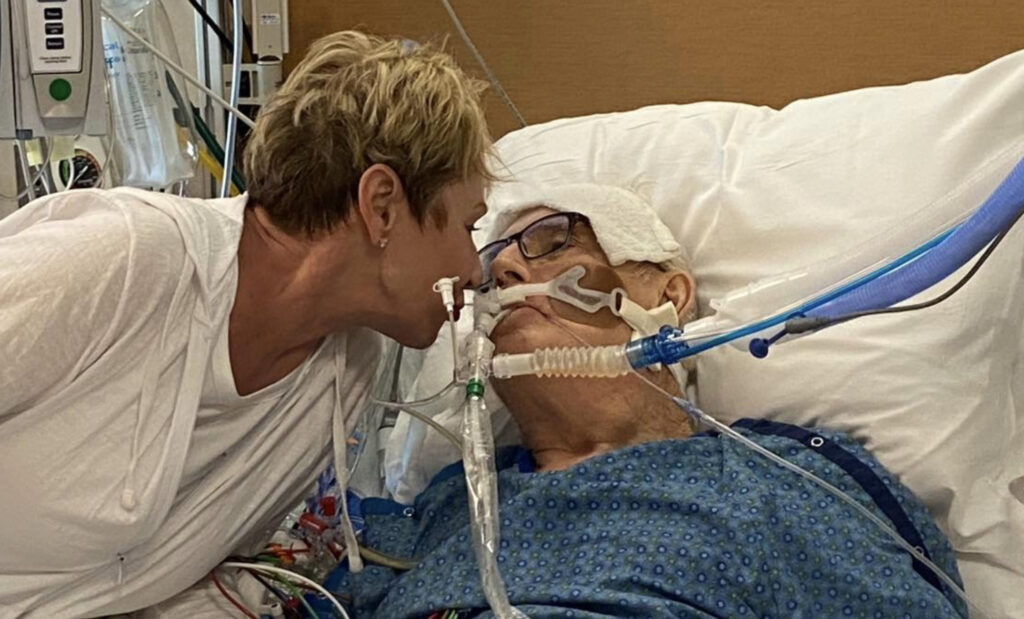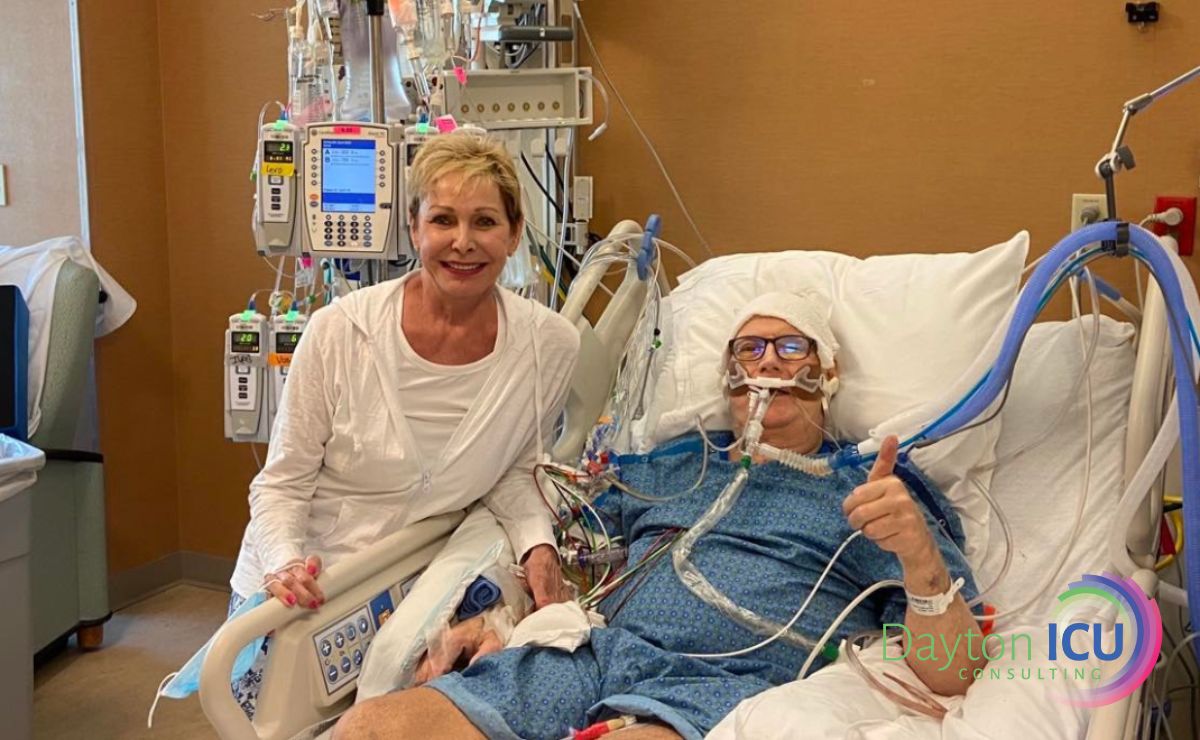Over the years, I’ve witnessed first-hand how the ABCDEF Bundle’s evidence-based practices can reduce healthcare costs, while improving patient outcomes and working conditions in the ICU.
But even though evidence shows that the ABCDEF Bundle can decrease the risk of death by 68 percent, its success is not always found in a patient’s ability to walk out of the ICU.
Among other things, one of the beautiful benefits of preserving patients’ humanity, function, and dignity with these practices is the ability to offer them the chance to say a proper goodbye.
This is a pretty heavy subject, but I think it’s important to highlight the fact that ABCDEF Bundle implementation not only improves outcomes for ICU patients, and increases their chances of survival, but it also helps to improve the quality of death for patients who aren’t so lucky.
That being said, I’ve compiled some examples of this that have been brought to my attention by my colleagues, along with several situations I experienced myself while working as a nurse.
So, if you’re looking to learn more about how the protocols proposed in the ABCDEF Bundle, like avoiding sedation, can improve the quality of death for ICU patients, then I hope you take the time to read this article.
A Friend Who Was Ready To Go
I once cared for a wonderful man in his 50s with severe interstitial lung disease, otherwise known as ILD.
I was blessed to be his nurse for each of my shifts for nearly a month. He was never sedated while intubated on mechanical ventilation and it was really fun getting to know him.
I knew his favorite songs, the meals he was looking forward to eating after extubation, and all his preferences.
But unfortunately, it became clear that his ILD was not getting better, and his plans were not going to be realized.
That being said, I was honored to have many intimate end-of-life discussions with him and his wife.
He continued to fight, but he was getting tired.
One morning at about 5 a.m. I heard a tapping sound coming from the oxygen probe on his bed. I ran in to find him anxious and restless, which was not normal for him.
I started to try to make him comfortable by adjusting his pillow and blanket, when suddenly he grabbed my wrist, locked his eyes on me, and mouthed, “I’m dying.”
Instinctively, I looked at the monitor to confirm that statement, until I suddenly realized what he really meant. I slowly turned back to him and asked, “You’re dying?”
He desperately nodded his head, and I said, “Are you ready to go?”
At this point, he slowly and peacefully nodded his head.
I said, “Do you want me to wake your wife up?”
He confirmed that he did, so I woke up his wife, who was asleep on the couch, and said, “Hey, he’s ready. And he wants to talk to you.”
I left the room, but his wife later told me that he asked if she would be okay.
She promised she would, told him to go be with their deceased son and that she would be fine until they were together again.
They expressed their love to each other, and then she said, “Okay, let’s do this. How do we do it?”
I said goodbye to him before giving him the morphine and Ativan, and as we extubated him, he was calm and resolute. I sang his favorite song and he quickly slipped away.
This was one of the most sacred moments of my life and my career, for that matter, and it was an incredibly poignant reminder of the importance of evidence-based sedation and mobility practices, like the ABCDEF Bundle.
Had this man been sedated, his final mortal moment would have been completely different for both himself and his family. But by being awake and alert, his autonomy and his rights were preserved.
He was able to call his own shots, and his wife was free of the burden of such huge decisions.
He was also allowed to connect with his loved ones and say goodbye to his soulmate before they were separated.
A Man Who Passed at a Peaceful Party
The second story involves a man in his 40s who had battled leukemia. His immunosuppression led to viral, fungal, and bacterial lung infections.
He was awake, mobile, and alert during his weeks on the ventilator, his family would have huge parties and gatherings in his room, and he was determined to make it.
But despite his best efforts and all possible treatments, his lungs were getting worse.
He was informed of the reality and severity of his condition the entire time, and he appeared optimistic, but was simultaneously preparing himself.
When I sat with him and his wife and explained to them that this appeared to be the end of his mortality, it was peaceful. I told them it was his party and everything could be done on his terms.
Despite his youth, he had been allowed the time to prepare himself for an early death.
He called in his family and they made his party plans. They had the music he’d chosen, everyone he wanted was there, along with memorable pictures of all the highlights of his life, and he had a huge glass of Coca-Cola on ice.
The fact that he was awake and alert allowed him to express his love to his six children and his wife before being extubated, and he was able to quickly sip his favorite drink before peacefully passing.
A Guy Who Went Out on His Own Terms

The third patient was admitted and intubated for severe respiratory failure only to find that he had extremely advanced terminal lung cancer.
Fortunately, he was awake and unaltered by sedation. As a result, he was able to arrange his final affairs and connect with his wife and children.
Though he was struggling at the very end, he refused to be extubated until the last paper was signed, and he was assured that his wife would receive all of his pension.
He was able to be released from this life, with his permission, on his time, while having the peace and order he needed.
Automatic deep sedation, which is standard practice for ventilated patients in conventional ICUs, would have robbed him of weeks with his family, preparation for death, and the chance to say goodbye.
But luckily, he and his family were allowed to share sacred moments and gain the closure that would have been stripped from them by automatic deep sedation.
A Man Who Just Wanted to Go Home
As a nurse practitioner, I cared for a wonderful elderly man who suffered through a complicated course of pneumonia.
In spite of his illness, he continued to walk on the ventilator and was motivated to preserve his life and function so he would be able to return home to care for his wife.
Sadly, he developed complications, including Takotsubo cardiomyopathy, but his family was determined to continue life-sustaining treatment.
One morning, as I was assessing and talking with him, he wrote on his clipboard, “I want to go home.”
I reminded him that he still required significant ventilator support that could not be provided at home, and he was not ready to be discharged.
He shook his head, pointed to his clipboard, and underlined the word home.
At this point, a sense of peace and understanding washed over me, and I asked, “You don’t mean your house, do you? You mean your heavenly home?”
He shed some tears and nodded his head.
Luckily, his family was present and able to understand that he was ready to pass on.
Though this was not their wish, they were allowed the opportunity to hear exactly what he wanted, and have peace of mind knowing that he was ready to go.
Such autonomy, closure, and sacred moments would not be possible if he was deeply sedated.
A Man Who Got Married on His Deathbed

A young man in his 30s was battling a severe case of acute respiratory distress syndrome (ARDS) in the Awake and Walking ICU.
He had been awake and walking on high ventilator settings, but it became clear that he was not able to maintain his oxygen saturation with movement and would need to be deeply sedated and paralyzed.
It was unclear if he would survive this.
He explained to his nurse that the mother of his children was deceased and he needed to make sure his fiancée had custody of his children.
He wanted to marry his fiancée, and he did not want to be sedated without knowing his children would be cared for by her if he didn’t wake up again.
The staff at the Awake and Walking ICU hurried to get the paperwork from the courthouse.
They found a pharmacist with the legal authority to perform the ceremony, which allowed him and his future wife to sign his marriage certificate. They even got a cake and flowers.
By the end of the shift, they had concluded a brief but sweet ceremony, and this patient was legally bound to his loving fiancée.
Unfortunately, he did not survive his ARDS.
But by avoiding sedation until it was absolutely necessary, he was able to ensure the safety and care of his children, and marry the woman he loved.
His dying wish was known, respected, and facilitated, and although his life was not spared, his children were able to live the life he had envisioned.
Giving Patients the Dignity They Deserve
By implementing the evidence-based practices found in the ABCDEF Bundle, such as avoiding sedation, we keep the patient’s hands on the wheel and give them the dignity they deserve.
And by preserving their capacity to remain awake and communicative, we allow them to play an active role in their own journey, right to the very end.
At the same time, we spare families the pain and burden of having to make gut-wrenching end-of-life choices and give them the chance to have closure and peace.
This is what I would want for my final moments – a chance to say goodbye.
Do you want to learn more about ABCDEF bundle implementation, so you can apply evidence-based practices in your ICU? If you’re ready to improve patient outcomes and quality of death, decrease your workload, and reduce healthcare costs, we’re ready to help. We’ll walk you through the entire process, so please don’t hesitate to contact us.




